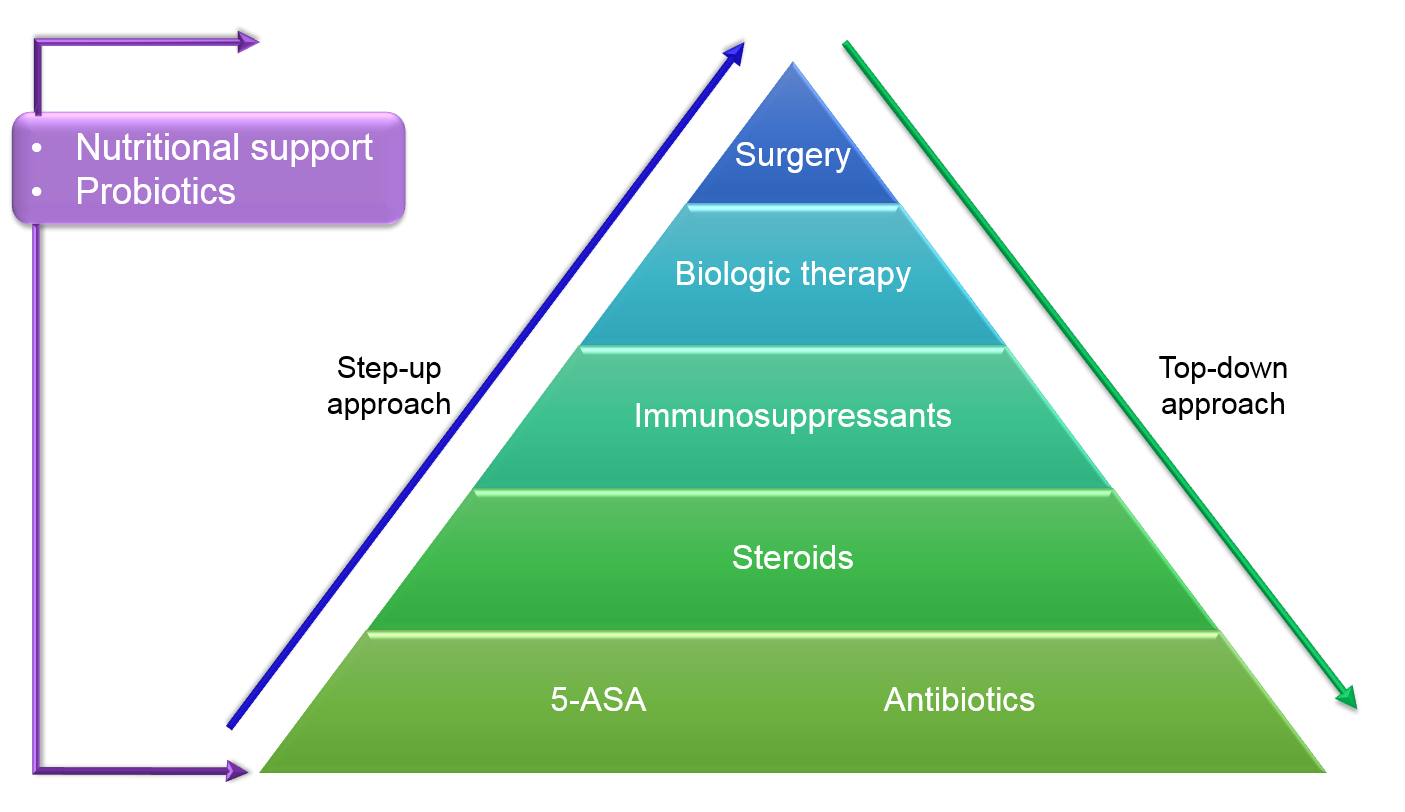IBD Diagnostics
Inflammatory bowel disease (IBD) is diagnosed through history, physical examination, and various tests and investigations.
The results from these tests can help ensure that you are given a correct diagnosis and that your treatment is based on good quality, reliable information.
You will probably only need to have a few of the tests listed in this information section. However, IBD is an ongoing condition, so some of the tests may need to be repeated from time to time, or extra tests may be needed.
Please refer to the corresponding sections to get information about various tests and investigations.
IBD Treatment
TREATMENT OVERVIEW
Treatment for IBD depends on many various factors:
- how much of the gut is affected
- what part of the gut is affected
- how severe the symptoms are
- how aggressive is inflammation on endoscopy and microscopically
- presence of other gastrointestinal or systemic disorders
- patient’s age
TREATMENT PYRAMID
Overall, IBD treatment concept can be represented as a pyramid. This treatment pyramid has been used over the past couple of decades as newer medications for the treatment of inflammatory bowel disease has emerged.
Originally, the concept of the pyramid was that as disease becomes more severe, we move up the pyramid to use "stronger" treatments. Although, newer studies have suggested perhaps "stronger" treatments given earlier in the disease course may lead to less bowel damage.

IS THERE A CURE FOR IBD?
- There is no cure for CD, however with appropriate medical treatment, the disease can be kept in remission
- Colectomy (surgically removing the colon) is a potential cure for UC, however patients may experience complications from the surgery
- Treatment for CD and UC differs slightly but the general approach and goals of treatment are similar
INDUCTION AND MAINTENANCE THERAPIES
Initially, the aim of the drug treatment will be reduce the inflammation in your gut to give you relief from symptoms, treat an active flare of the disease and induce (bring about) remission which will "GET YOU WELL". This is sometimes called induction therapy.
Once your condition is under control, your doctor will usually continue to prescribe drugs to help maintain remission and prevent a relapse (recurrence of active disease). This is called maintenance therapy. These treatments are meant to be long-term and to be taken even when you do not have any symptoms and are well. These maintenance medications may differ from induction therapies, however, some of the induction medications can be continued long-term and used as maintenance treatment. The aim of these therapies is to "KEEP YOU WELL".
WHAT FACTORS AFFECT TREATMENT CHOICES
-
What part of the gut is affected. Certain medications are formulated to release the active drug in different parts of the bowel.
-
How severe is disease. If mild-to-moderate, you can can treated as an outpatient and "milder" drugs can be considered as the first line of therapy. In a case of severe disease or complications, you might be admitted to the hospital for close observation and management, and "stronger" medications are often used up front.
-
Lifestyle. If you travel a lot, you might consider drugs which are self-administered instead of those which are given by infusions.
For more information see Medications, Surgery & Diet.









